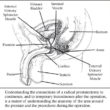Treatments for Enlarged Prostate
Q: What procedures or techniques have been shown to have long-term relief or benefits for an enlarged prostate? Can you tell something about Prolieve Thermodilatation System and Green-Light-Photo Selective Vaporization?
A: The standard initial treatments for an enlarged prostate gland causing urinary symptoms involve the use of drugs called alpha-blockers (such as Flomax).
These drugs do not shrink the prostate but rather relax the smooth muscle in it so the urine flows more freely through it. Because they also have a tendency to relax the smooth muscle fibers in the arteries, they can lower the blood pressure and cause fainting spells.
Another class of medications that do shrink the prostate are called 5-alpha-reductase inhibitors (Proscar, Avodart). These drugs shrink the prostate and lower the PSA level to a variable degree (in some patients as much as 70% or more).
They are effective in relieving the urinary symptoms from an enlarged prostate gland and have been claimed to prevent prostate cancer; however, by lowering the PSA level they can mask the presence of prostate cancer (particularly its more dangerous high-grade aggressive forms). More men taking Proscar have been reported to b diagnosed with high-grade prostate cancer than those taking a placebo pill.
Accordingly, I do not recommend these medications to my patients unless they have such severe urinary symptoms that they are in danger of developing urinary retention and needing surgery to relieve it. In this case, if their PSA is higher than 2.5 or their PSA velocity is higher than 0.35, I recommend performing prostate biopsy to rule out prostate cancer before beginning the 5-alpha-reductase inhibitor.
After starting treatment, I monitor their PSA levels regularly. The PSA levels should decrease on treatment, and, if they don?t, I consider performing (or repeating) a prostate biopsy.
The standard operation for an enlarged prostate gland is called a transurethral resection (TURP) in which the core of the prostate gland is removed by electrocautery through a scope. This procedure is usually very effective in opening up the obstructed urinary channel, but occasionally, it may be associated with bleeding.
Alternative methods for opening up the urinary channel that are usually associated with less risk for bleeding involve heating the core of the prostate gland or vaporizing the tissue in the core of the prostate with a laser beam.
Heat therapy is less effective in providing durable relief of obstruction because it does not open up the channel as well as a TURP or the laser procedure. Potential drawbacks of both procedures are that they do not provide tissue samples to rule out prostate cancer, they may cause scarring that, itself, causes urinary obstruction, and, not infrequently, they need to be repeated or followed by a TURP.











